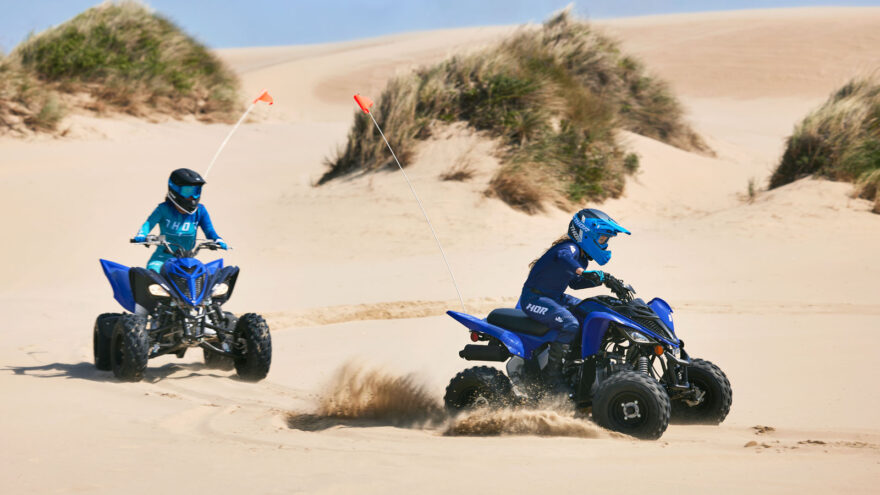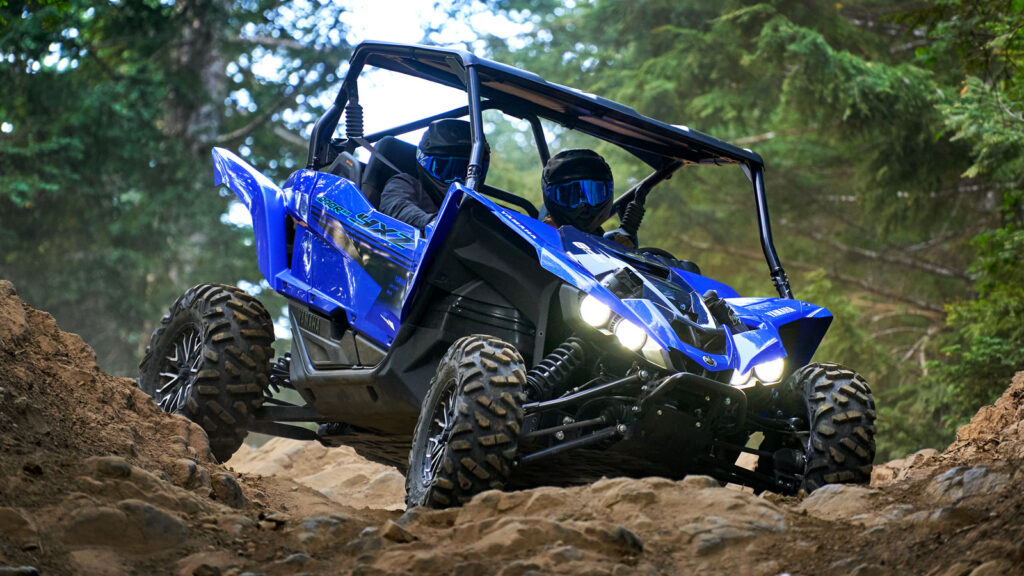
Riding off-road is a great way to spend time with family and friends while you get to see the great outdoors. While you won’t be encountering as many people out on the trails as you would driving through traffic on your daily commute to work, chances are that you’ll still come across other riders/drivers enjoying their time as well. We have some great tips on how to enjoy time on your ATV and SxS while still being safe.
Thank you to Yamaha for sponsoring this New Rider series.
Imagine this. You’re out riding your ATV in the middle of nowhere (at least to you), and as you come around a blind curve in the trail there is another vehicle blazing toward you in the opposite direction. In a matter of seconds, both you and the other rider are performing evasive maneuvers to prevent slamming into each other potentially causing damage to both man and machine.
Situations like these are completely avoidable as long as both operators ride with common sense and follow the basics of trail etiquette.
First and foremost, the way to ensure that you’re safe when riding is to know how your machine will handle different situations. One of the best ways to do this is by taking one of the many classes offered through the ATV Safety Institute or Recreational Off-Highway Vehicle Association. These organizations offer both online and in-person courses to get you familiar with the basics of ATV and SxS operations. When you’ve got the opportunity to take the in-person courses, they cover things like driving on rocky or sandy terrain, clearing obstacles, and turning at speed.
There is a lot that you can do on your own to learn how your machine handles. If you have the ability to go to a legal wide-open riding area, practice safe stopping and acceleration, and cornering at various speeds. By doing this, you get a feel for how your machine will handle in each situation. Some may have more body roll than other machines you’ve previously ridden in, but you will feel this and be able to either make suspension adjustments to eliminate it or just learn to deal with it altogether.
Another way to ride safely is to assume that the trail you’re on is going to encounter traffic coming from the opposite direction. While many riding areas have designated one-way trails, most do not and it’s best to assume that you will encounter someone traveling in your direction. In a long straight section of road, there’s not much to worry about as long as you stay on your side of the road.

Where you need to be on your toes is in areas where your view is obstructed. Many trails have blind curves, so it’s best to assume that there will be someone coming toward you. Handle this by driving on the right side of the road and approaching each curve with caution at a safe speed. In low-lying areas, it is recommended to install a whip and flag that can make you visible to other riders.
In the event that you do come across traffic headed in the opposite direction and are able to safely stop, find the best place for either of you to safely back up so one or the other can pass with adequate room.
Passing along or receiving information, like how many riders are behind you, is also quite helpful when out on the trails. When coming across someone and you’re riding in a group of people, use your left hand to signal oncoming riders how many other vehicles you’ve got behind you. Use a finger to signify each rider behind you, and each rider behind you should do the same. If you’ve got more than 5 riders behind you, just use 5 and the declining number of fingers from the riders behind you lets others know the obvious. The very last rider should use a closed fist, which signifies that they are the last rider in the group.
If you’re new to riding, you’ll want to be comfortable on or in the machine you’ve got the controls for. It can be really easy to get caught up in the moment of riding with other people who might be more experienced than you, and quickly get over your head. Riding within your ability and skill is the important way to remain safe when you’re enjoying your ATV or SxS. If you’re new to the sport, don’t be afraid to tell people that you’re not comfortable doing something. We’re pretty sure that the people in your group would rather take the time to help you get through an obstacle or take easier routes than have the ride stopped altogether by someone getting hurt or a machine breaking down.
Finally, the best way to ensure that you’re safe when riding is by making sure the machine you’re using is safe for operation. Before and after every trip, give your machine a good inspection. Look for worn-out components like tie-rod ends, ball joints, loose nuts and bolts, and even while you’re riding, keep an ear out for weird noises that might not have been there before. Those odd noises can be early indicators of parts getting worn out or necessary maintenance. As long as your machine is maintained regularly, it should provide you with hours and hours of reliable fun.
 Your Privacy Choices
Your Privacy Choices